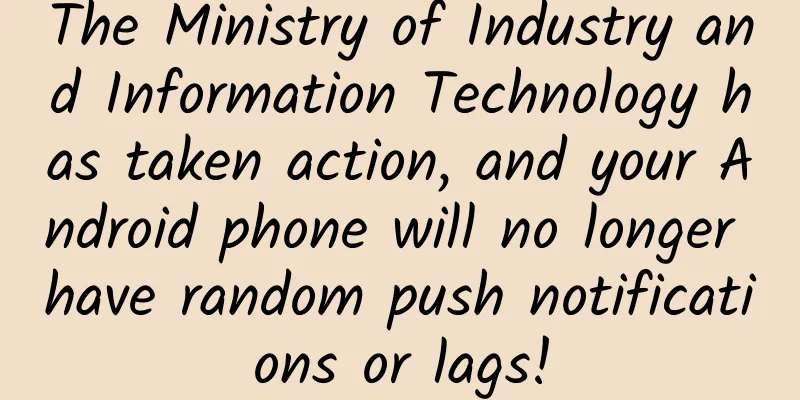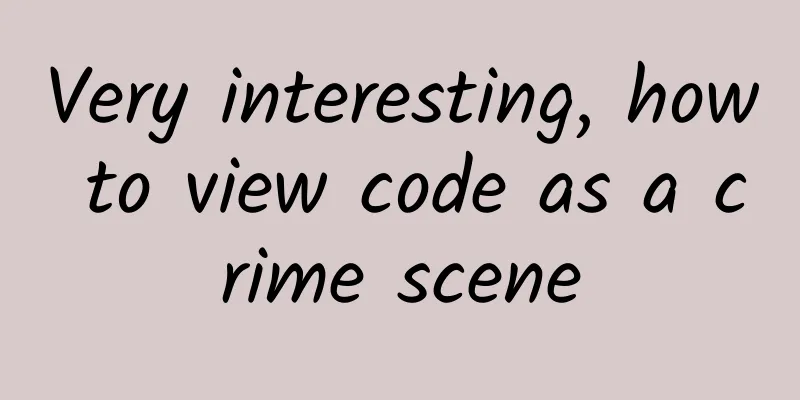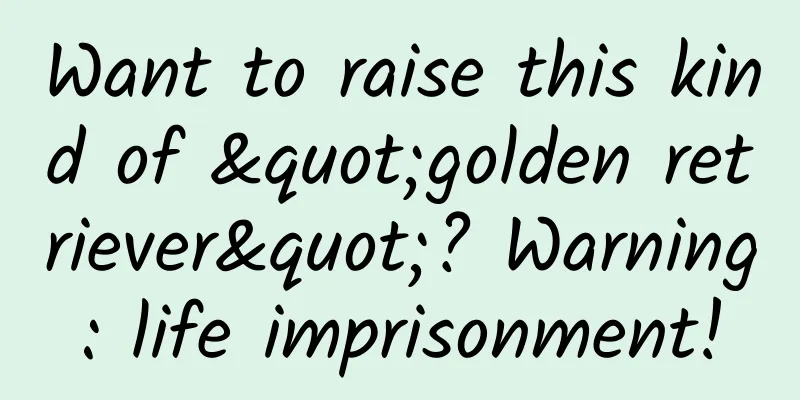The Ministry of Industry and Information Technology has taken action, and your Android phone will no longer have random push notifications or lags!

|
Recently, I saw a piece of news that the "China Green App Convention" has begun to be fully promoted. Not only that, the alliance members also held a meeting on April 3. I checked the official website of the Android Green Alliance and it seems that they still haven’t compiled a draft. . . But I think it is still necessary to talk to you about the most important thing: Android unified push. Let’s talk about mobile phone push today. App notifications and push notifications are originally intended to provide messaging services. For example, WeChat and QQ use push notifications so that you can receive messages even when WeChat and QQ are not open on your phone. Or Alipay and major bank apps will give you consumption notifications - if the money in your account has been moved, they will definitely tell you. However, the push notifications nowadays are often very abnormal... the kind that just tickles you for no reason. It's fine to tickle you once... But if they tickle you N times a day for no reason, and there are too many apps doing this, wouldn't they want to peel off your skin? If you can't stand it, how can the mobile phone that receives messages stand it? Emmm... In fact, mobile phones have their own unique way of receiving push notifications. The push notification on an Apple phone is as follows:
The advantage of doing this is that the software does not need to be started, the message just needs to be sent, and the phone only needs to receive the message from the push service. Android phones also have such a mechanism. Yes, “originally” . . . As we all know, the Android system is currently owned and maintained by Google, and the system responsible for push services in Android is called GCM (Google Cloud Messaging). But maybe Google is too lazy, and many of the Google services that come with Android cannot be deployed normally in the country. Therefore, domestic manufacturers such as Huawei, Xiaomi, OPPO, vivo, etc. have made some modifications to the native Android. Some modestly call themselves "UI", such as EMUI and MIUI, while some confidently call themselves "OS", such as ColorOS and Function Touch OS... Naturally, there is no GCM in these various "UI" and "OS". So the question is, how to push these apps? Everyone's solution is very crude and simple, just push it to the phone! Push notifications from major apps are sent to the software manufacturers’ own apps through their own servers, and then the apps send them to the mobile phones. Looks like it's pretty much the same? Just missing a transfer station? In fact, there is a big difference. These push notifications have changed from system services to software services. To provide a service, the software itself has to keep running. The system is already running, so adding a small service doesn't matter much. The consequence of letting apps provide their own services is that in order to maintain push notifications, they have to find a way to "keep it alive" and ensure that the software runs in the background. If there are too many permanent background programs, the battery and memory will be greatly affected. It is like there are too many people at home and not enough food to eat. As a result, there is heat, power loss and lag. . . Some rogue manufacturers will even use this permanent background to do other things... For example, they will use this App to wake up other software of their own. For example, it is like the postman father delivered a letter (push) to this family, had a meal, and called the whole family to eat together... Do you think this situation is chaotic? Is it terrible? Therefore, the hardware of Android phones is much more powerful than that of Apple phones, with large batteries and large memory. So the question is, are there no domestic manufacturers who would rectify this mess for the sake of users? Well... they have the opportunity to act like hooligans, they are so happy, why bother thinking... . . . Actually, not entirely. Xiaomi has launched a service called Mi Push. The concept is similar to GCM, but it has a problem: the coverage is too low. Think about it, Xiaomi's own services can be used on MIUI, but what about those who haven't bought a Xiaomi phone? What? You said that other manufacturers should use Xiaomi's push service. Why? In fact, not only Xiaomi, but Huawei has also launched push services. Well... software developers can just develop an Android app, but now they have to arrange push services for each major Android manufacturer one by one? Since being an honest person is so troublesome, you might as well continue to be a hooligan. Did you notice? Each manufacturer’s push service can only cover its own products, and no one is willing to submit to anyone else, so it is impossible for them to use other people’s services. If we launch them separately, it will be too messy for developers... What to do? The Ministry of Industry and Information Technology has stood up. Everyone must be convinced, right? You see, as soon as the Ministry of Industry and Information Technology called for the establishment of an "Android Green Alliance", everyone responded. On the one hand, the Android Green Alliance advocates regulating the behavior of major apps on the Android side, and on the other hand, it is doing something that is actually really useful: developing a push service that can be used by domestic Android devices. In this way, the App no longer needs to stay in the background for push notifications, and the old hooligans can no longer use "push notifications" as an excuse to stay in people's phones. In 2017, the Android Unified Push Alliance was established through the "Taiwan Telecommunication Terminal Laboratory" under the Ministry of Industry and Information Technology. After two years of delay (which shows how difficult it is to promote improvements in chaos), we can finally start testing in March this year. A few days ago, the Unified Push Alliance launched the "China Green App Standard". By the end of the year, the existing push channels will be unified and compatible, achieving a push effect similar to GCM or iOS: first pass through the service system, and then be delivered to our mobile phone users. In this way, the system experience of domestic Android phones may be able to restore the original smoothness of native Android. Combined with the highly customized characteristics of the Android system, it can definitely compete with iOS. At least, it won't be so stuck... |
<<: Three ways Apple products die
>>: Tencent QQ expansion officially launched, netizens joked: I feel 10 years younger
Recommend
E-commerce 618 | How to design posters for information flow promotion ads?
With the hot Internet e-commerce launching variou...
How to become an operations expert? Here is a structural diagram for you!
Now that we have to build a standard operation st...
Wuchuan SEO Training: These methods may lead to excessive website SEO optimization, are you still using them?
Are there still many people using excessive websi...
How to create hot marketing activities and specific implementation plans!
In the early morning of July 27, I saw several on...
How much does it cost to customize a practical information mini program in Yantai?
More and more businesses are paying attention to ...
LG's eye-opening curved OLED TV gives you what you want
LG Curved OLED65EC9700-CA is an OLED ultra-high-d...
The most practical Tieba traffic diversion methods and techniques on the entire network in 2019!
A large number of account merchants have died thi...
How to create popular content on Xiaohongshu?
As one of the social platforms, Xiaohongshu’s mis...
Middle School Diary: Sand Sculpture Animation: Mobile Computer Production Tutorial, Pandaman Animation Production, Zero-Based Teaching
Middle School Diary·Sand Sculpture Animation: Mob...
Counterpoint: Global semiconductor revenue to grow 19% in 2024
Revenues in the global semiconductor market, incl...
How to manage an event well?
The content of this article is very dry, so it is...
Summary of APP promotion channels: application stores, self-media channels, etc.
Since I started working in promotion, the two que...
The classic "flash" is reborn in "Glitter Pac-Man" with a new experience
Screen: operate: Sound Effects: Plot: Experience:...
The key project of the Chinese Academy of Sciences, "Research on Key Materials for Strategic Emerging Industries", passed the expert acceptance
Recently, the key project of the Chinese Academy ...
With iPhone 7 about to be released, where will Apple go in the post-iPhone era?
All good things must come to an end. At least sin...









